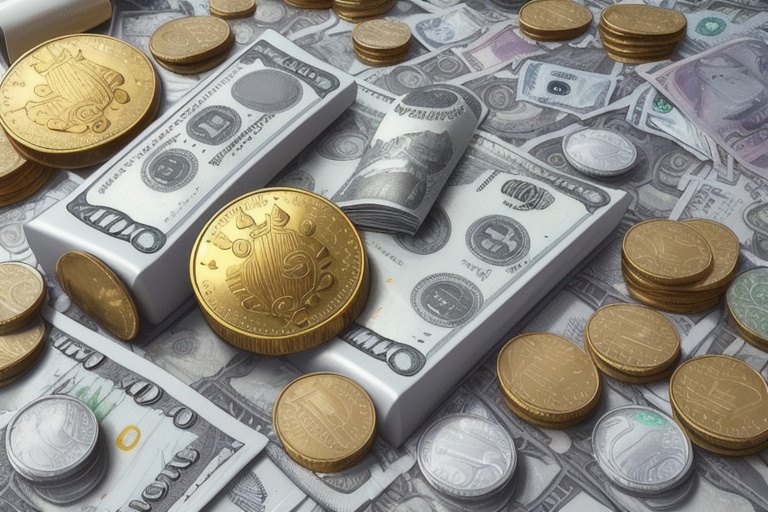Coin enthusiasts and casual collectors alike often marvel at the fact that fortune can indeed come in small denominations. At first glance, pennies might seem the least promising of pocket change for anyone hoping to strike it rich in the fascinating world of coin collecting. However, certain pennies have been stealing the limelight in the numismatic community for their astonishing potential value, making it clear that one should always give second thought before letting go of their copper – or sometimes, steel – change.
Coin enthusiasts and casual collectors alike often marvel at the fact that fortune can indeed come in small denominations. At first glance, pennies might seem the least promising of pocket change for anyone hoping to strike it rich in the fascinating world of coin collecting. However, certain pennies have been stealing the limelight in the numismatic community for their astonishing potential value, making it clear that one should always give second thought before letting go of their copper – or sometimes, steel – change.
The Illustrious 1943 and 1944 Pennies
Of particular interest to those with numismatic proclivities are the pennies minted during 1943 and 1944. Amidst the tumultuous backdrop of World War II, these coins inadvertently became rare collectibles. The year 1943 witnessed the temporary transition from copper pennies to steel ones, as copper was designated for war material. However, a handful of copper pennies were mistakenly struck that year, giving birth to a numismatic legend. Should you come across a copper penny dated 1943, you could potentially be holding a coin worth upwards of $250,000 in perfect condition, and more than $60,000 even if it's merely in average condition.
Meanwhile, the coin committing the reverse blunder—a steel wheat penny dated 1944—stands as a numismatic crown jewel. In a twist of fate, as the U.S. Mint resumed the production of copper pennies, a few leftover steel planchets were erroneously stamped with the 1944 date. It is reported by Cointrackers.com that one of these rare steel specimens in mint condition could command an eye-watering value of approximately $408,000. Even in less than perfect condition, they can be worth around $10,000.
Authenticity and The Magnet Test
Authenticating a 1943 copper penny or a 1944 steel wheat penny can be quite straightforward with the ever-reliable magnet test. Steel pennies, true to their composition, will exhibit magnetic properties. Copper counterparts, naturally non-magnetic, should not respond to a magnetic pull. However, knowing counterfeit attempts can involve sophisticated methods like altering the dates on more common pennies, vigilance is key. An expert evaluation is highly recommended for a definitive assessment.
A Collector's Dream
While stumbling upon these rarities in change from a grocery trip is unlikely, it doesn’t render the scenario impossible. Various collectors have turned chance encounters with these unique pieces into massively rewarding experiences. Watchful eyes at antique shops, flea markets, and coin shows could lead to unexpectedly rewarding discoveries. Hence, it's always worth giving those seemingly mundane pennies a second glance; they could potentially escalate the value and intrigue of your collection exponentially.
Beyond 1943 and 1944
Our numismatic journey doesn’t end at the World War II era coins. Other pennies deserving of recognition include the 1856 Flying Eagle Penny, which may fetch around $25,000, and the 1873 Indian Head Penny, which can command a price tag of $10,000. The 1858 and 1857 Flying Eagle Pennies, occasionally surfacing in collections, could also sell for $10,000 and $7,000, respectively. Other notable mentions range from the 1914 D Wheat Penny to the iconic 1909 S VDB Wheat Penny and the elusive 1877 Indian Head Penny, all of which command impressive valuations that reflect their rarity and historical significance.
Preserving and Appreciating Historical Artifacts
Owning these numismatic treasures goes beyond their monetary value. It is about holding a piece of history, admiring the craftsmanship, and preserving a legacy that can be passed down through generations. Protecting your investment involves authenticating each piece, ensuring proper storage, and consulting with reputable coin dealers or professional appraisers who can provide insights into the finest preservation techniques.
The Continual Hunt for Numismatic Treasures
The lure of unearthing a rare coin maintains its hold over the imaginations of collectors everywhere. The anticipation and thrill attached to numismatics—whether as a professional pursuit or a leisurely hobby—continue to thrive. On this thrilling quest for precious metal artifacts, always remember the potential that each penny holds. The next time you find yourself rummaging through your change, pay attention. A small, shiny discovery could very well translate into a monumental addition to your coin collection or even a treasure-trove waiting to be valued.
Information for this article was gathered from the following source.

